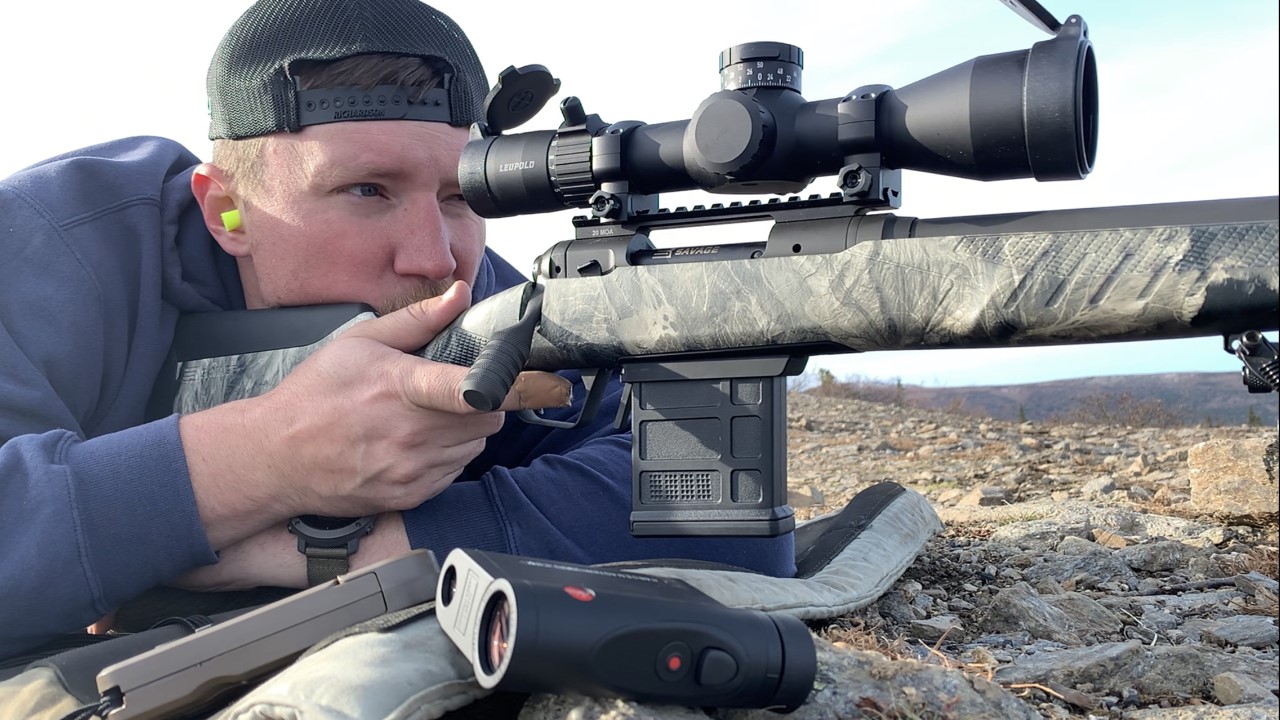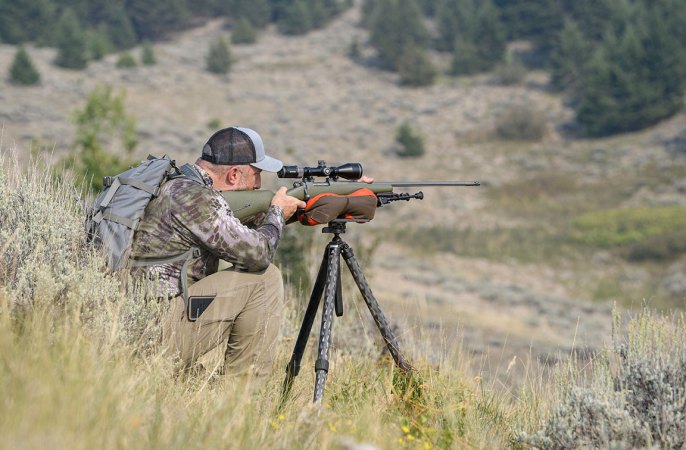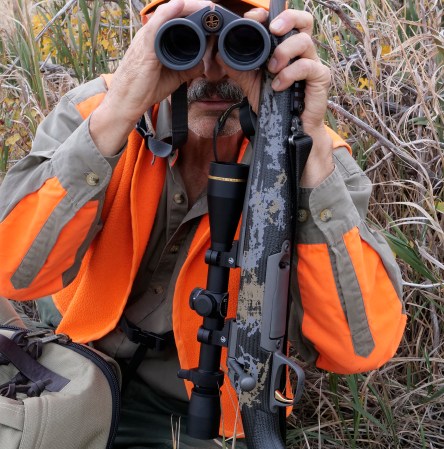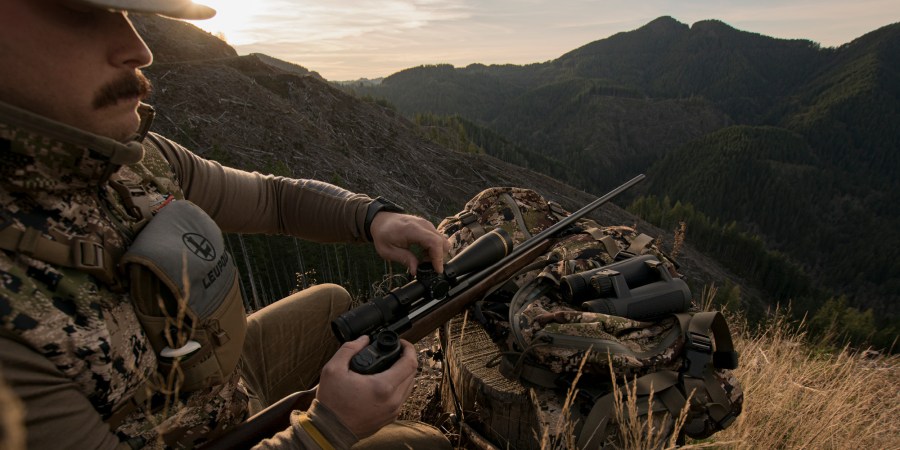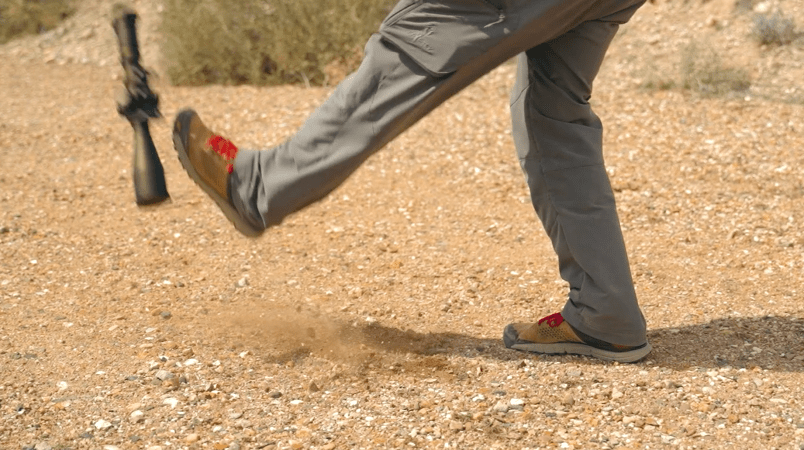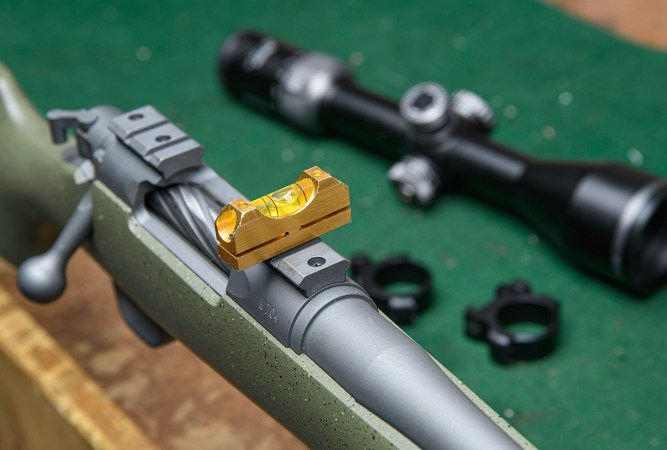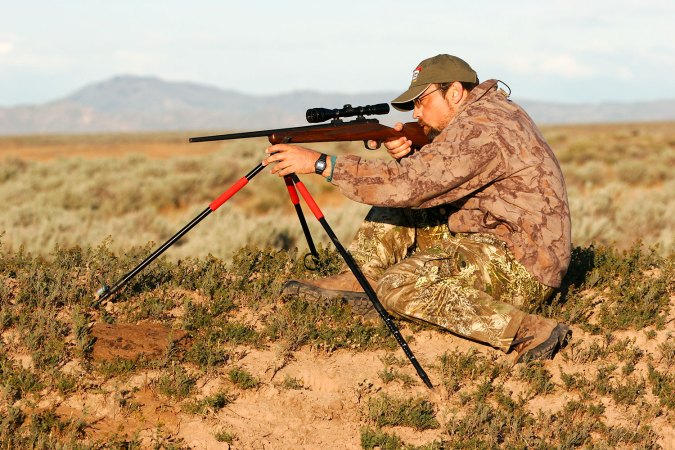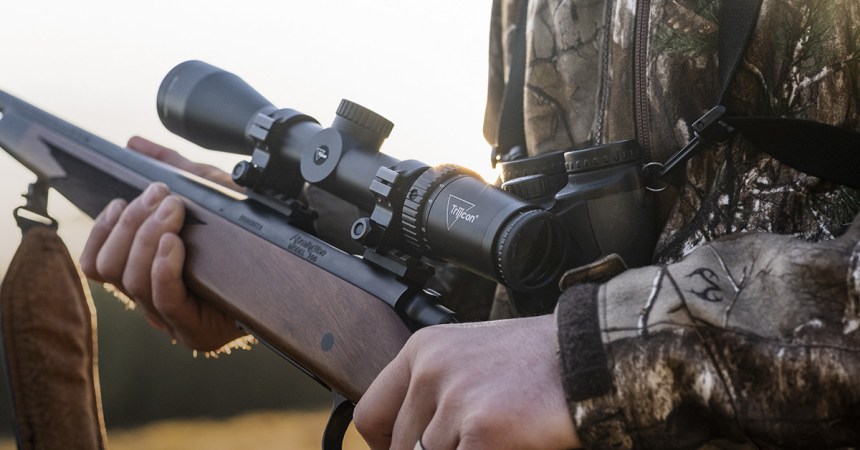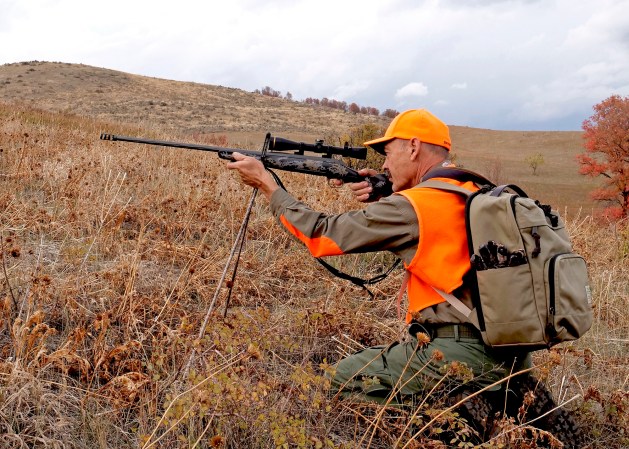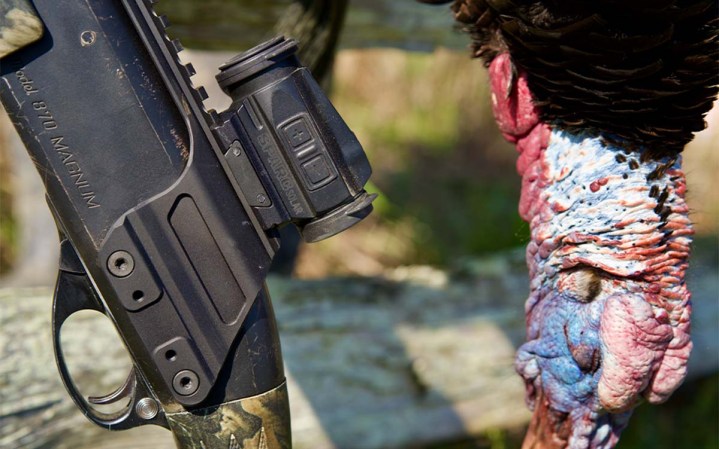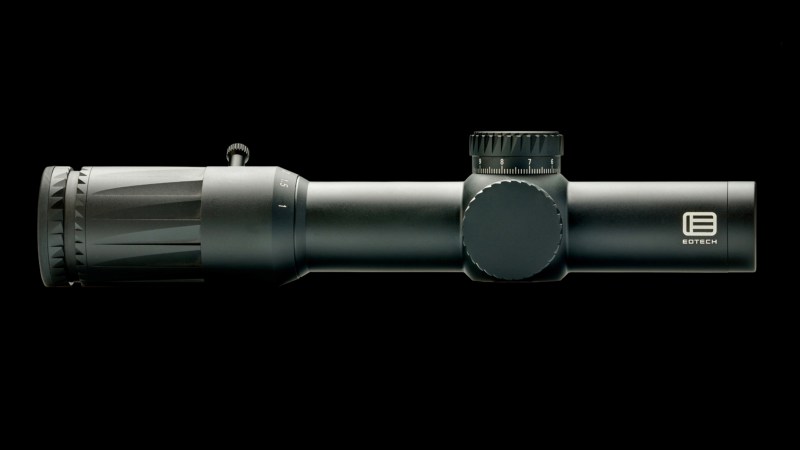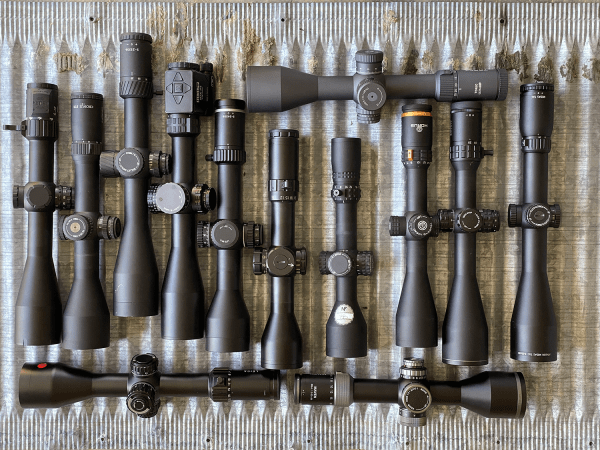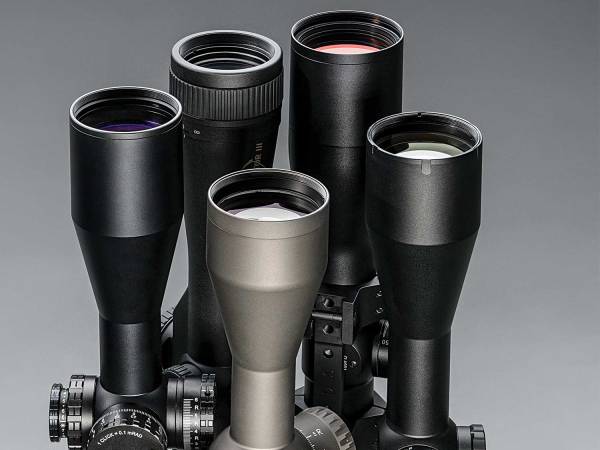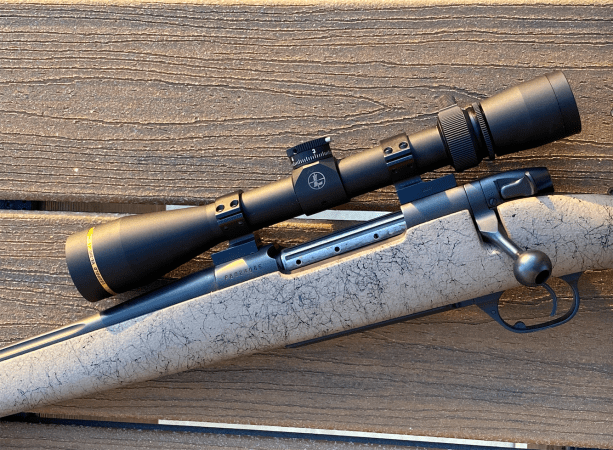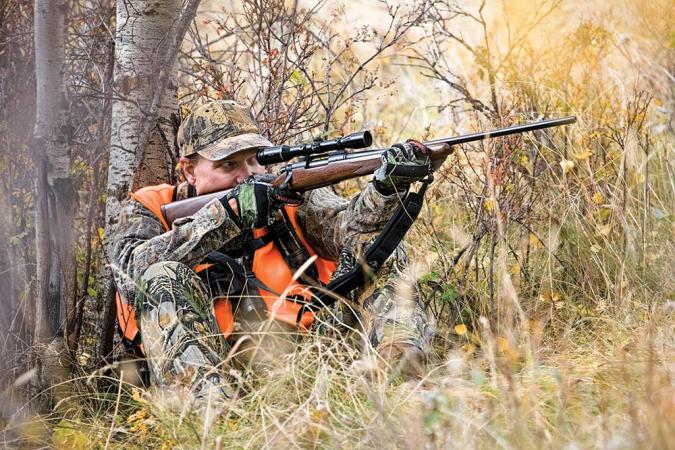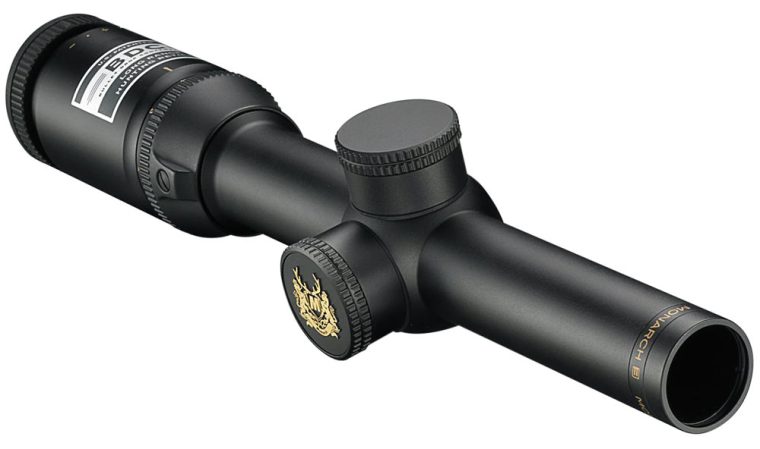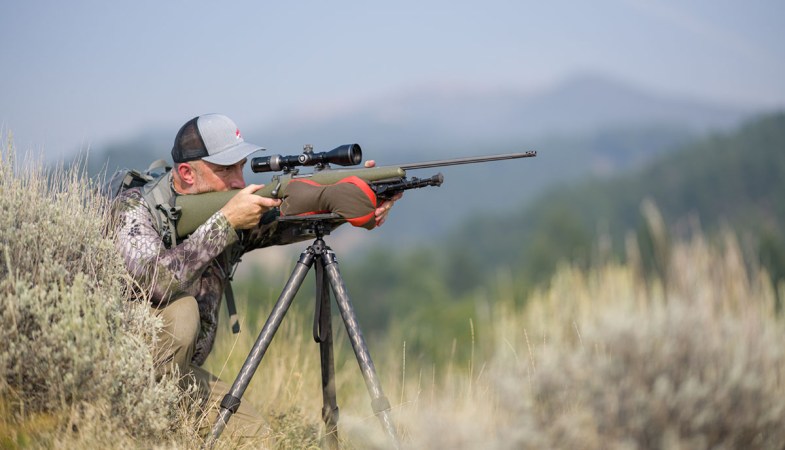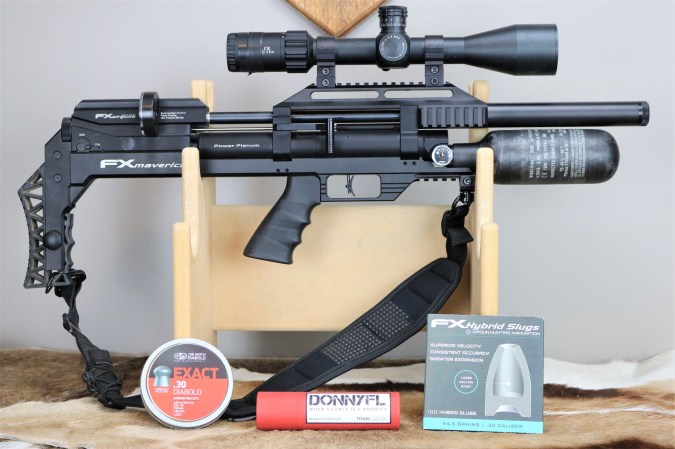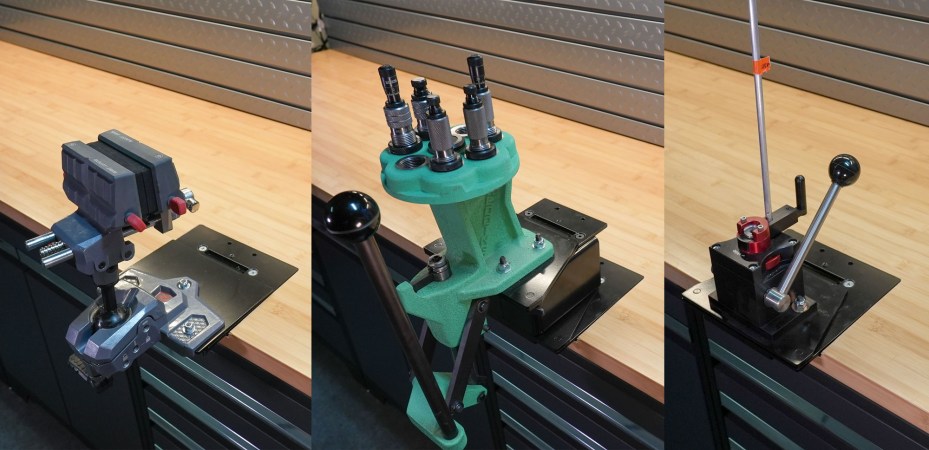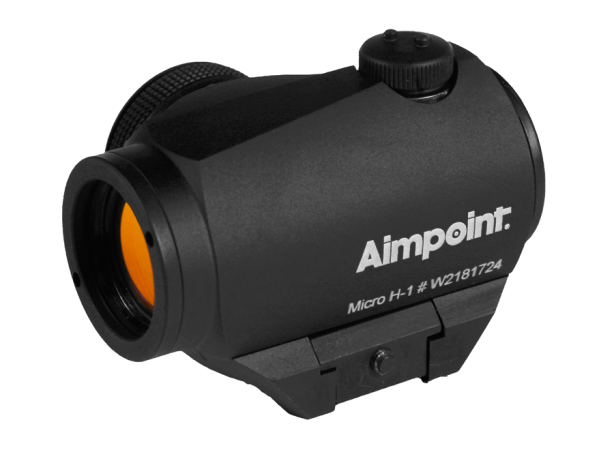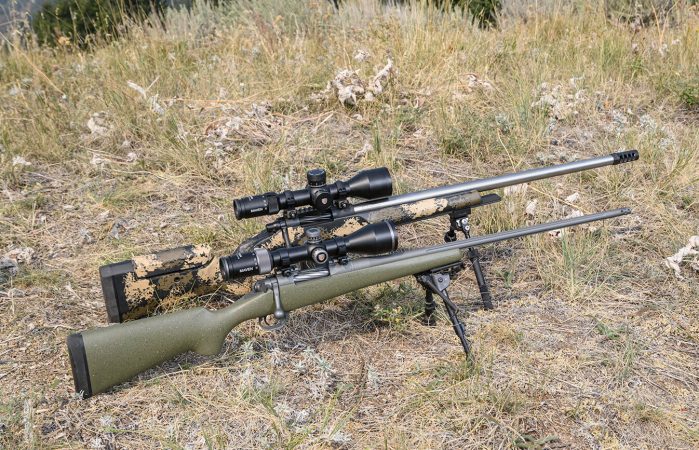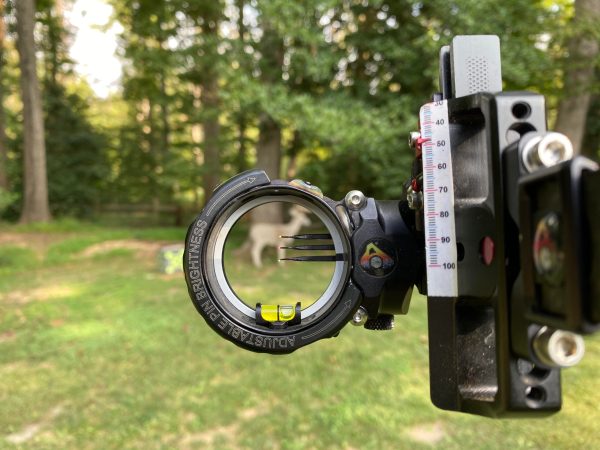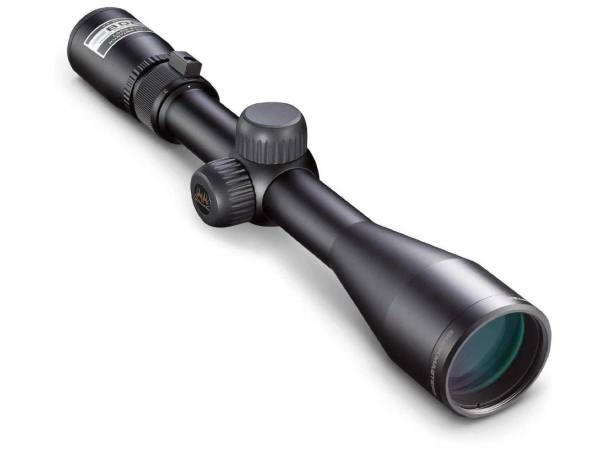We may earn revenue from the products available on this page and participate in affiliate programs. Learn More ›
I tapped the button on my rangefinder to send a laser at a group of three bedded rams. I was 465 yards away. Caught off-guard by the rams, I had to approach them from below and this was as close as I was going to get without being busted. The shot was well within my range, and the broken fog that socked in parts of the mountains hung dead in the air, so adjusting for the wind would not be an issue. Dialing my custom turret to 4.6, I eased up on my belly to a comfortable shooting position. The familiar “thunk” of a solid hit followed the report of my rifle. The ram stood up, only to fall right back over.
Adjustable sights date back to late 1900s. The old 1874 Sharps buffalo rifles were some of the first to have them. Turret adjustment has had a renaissance amongst hunters in the last decade. Dialing for proper windage and elevation has helped make us better long-range shots and more precise, which makes our kills clean. When I was a kid, I used a fixed or variable power scope, and zeroed it 2 or 3 inches high at 100 yards. If I wanted to shoot past 300 yards, I had to estimate the yardage and memorize the drop chart on the back of the ammo box. For most applications, a hunter can be effective with “holdover,” especially if he or she owns a scope with a holdover reticle. But it still leaves plenty of room for mistakes. Dialing your turrets properly allows you to settle the crosshairs on your intended target and make a smooth trigger pull.
I was first introduced to sight adjustment in my service rifle competition days, though riflescopes with adjustable elevation and windage turrets have been around for much longer. For hunting, I have used Leupold’s CDS (custom dial system) turrets on a VX-3 riflescope. I quickly realized the value in being able to adjust elevation for distance, and hold on target. It took the guessing out of how high to hold over the back of a sheep or caribou. Now, I can’t justify not having an adjustable turret on any rifle I might want to shoot beyond 250 yards. Custom and non-custom turrets are available in a wide variety of riflescopes. But if you’re just beginning to dabble, there are a few basics you need to know about turrets.
How Turrets Work

First, whether you’re ordering a custom turret or just plugging data in to generate a drop chart for a standard turret, you need to know the exact bullet and chronograph its velocity out of your rifle if you want to be able to make accurate adjustments in the field. A custom turret is typically made for one particular load. You send the manufacturer the data and zero range of your rifle, and they build a turret to match the exact trajectory of your bullet. You will simply need to range your target and turn the dial to the appropriate yardage listed on the turret. Factors like temperature and elevation can also have impacts on cartridge trajectory, so be sure to account for those as well. If you’re unsure of what those factors do to your bullet, talk to the ammunition manufacturer. They should be more than willing to help. Once you generate the calculated data, it’s also important to verify it on the range. Use the rangefinder you will be hunting with, and note any differences in impacts versus your calculations.
The Importance of a Zero Stop
Another important thing to know about your scope is whether it has a zero stop, zero lock, tracking, or other adjustment-locking mechanism. Some scopes have adjustable elevation and/or windage turrets that are fully adjustable both up and down and left to right with no way of fixing them in one place. This isn’t a problem when your rifle is sitting in the gun closet, but while you are hunting, your turret can easily be caught on something and get twisted. And you might not be able to tell if the rifle is zeroed or a full revolution off, which will cause your shot to be way off line.
If you have a zero stop, that means from any given elevation change, you can twist the dial all the way back down till it stops, and you’re back at your basic zero distance every time. Some scopes like Leupold’s VX-3HD, have turrets that lock onto zero, and you have to push a small button to manually make an elevation adjustment, which eliminates accidental adjustment. Many scopes also have reference marks to tell you if you’re more than one revolution up from your zero, so make sure to familiarize yourself with your scope to ensure that you understand how to determine where you’re at.
You Still Have to Practice
Practice making adjustments, shooting, and coming back to zero with your scope. Generally, your impact will adjust in the direction you’re moving your turret. Elevation impact is adjusted up with a counter-clockwise turn, and down with a clockwise turn. Windage is usually moved right with a counter-clockwise turn and left with clockwise turns. However, there are some makes of riflescopes that have opposite directions of adjustment, so make sure you pay attention to what you’ve got. There’s no substitute for range time and learning wind conditions and how they affect your impact, but also practice interpolating between marked yardages on your chart or turret, so that you can make a more accurate shot at any reasonable distance. A good drill is to shoot out to a set yardage, say 200 yards, and then shoot at closer target between 100 and 200 yards or one between 200 and 300 yards. You can increase these distances as you become more proficient with your rifle.
Read Next: Riflescopes: MOA vs. Mils
Finally, don’t use your turret as an excuse to skip out on range time or shoot at an animal beyond ranges you would not be comfortable with if your turret was not dialed for a specific load. A turret is a wonderful tool, and can make hunters much more precise within reasonable shooting ranges. It can also help experienced shooters be more accurate at longer distances. Buy you have to practice. Know your rifle and scope, and how to evaluate hunting scenarios so you can make an ethical shot.

